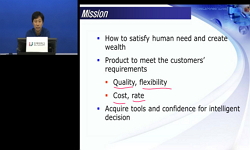PURPOSE. To evaluate the effects of different abutment geometries in combination with varying luting agents and the effectiveness of different cleaning methods (prior to re-cementation) regarding the retentiveness of zirconia copings on implants. MATE...
http://chineseinput.net/에서 pinyin(병음)방식으로 중국어를 변환할 수 있습니다.
변환된 중국어를 복사하여 사용하시면 됩니다.
- 中文 을 입력하시려면 zhongwen을 입력하시고 space를누르시면됩니다.
- 北京 을 입력하시려면 beijing을 입력하시고 space를 누르시면 됩니다.



Evaluation of removal forces of implant-supported zirconia copings depending on abutment geometry, luting agent and cleaning method during re-cementation
한글로보기https://www.riss.kr/link?id=A100928357
- 저자
- 발행기관
- 학술지명
- 권호사항
-
발행연도
2014
-
작성언어
English
- 주제어
-
등재정보
SCIE,SCOPUS,KCI등재
-
자료형태
학술저널
-
수록면
233-240(8쪽)
- 제공처
- 소장기관
-
0
상세조회 -
0
다운로드
부가정보
다국어 초록 (Multilingual Abstract)
PURPOSE. To evaluate the effects of different abutment geometries in combination with varying luting agents and the effectiveness of different cleaning methods (prior to re-cementation) regarding the retentiveness of zirconia copings on implants. MATERIALS AND METHODS. Implants were embedded in resin blocks. Three groups of titanium abutments (pre-fabricated, height: 7.5 mm, taper: $5.7^{\circ}$; customized-long, height: 6.79 mm, taper: $4.8^{\circ}$; customized-short, height: 4.31 mm, taper: $4.8^{\circ}$) were used for luting of CAD/CAM-fabricated zirconia copings with a semi-permanent (Telio CS) and a provisional cement (TempBond NE). Retention forces were evaluated using a universal testing machine. Furthermore, the influence of cleaning methods (manually, manually in combination with ultrasonic bath or sandblasting) prior to re-cementation with a provisional cement (TempBond NE) was investigated with the pre-fabricated titanium abutments (height: 7.5 mm, taper: $5.7^{\circ}$) and SEM-analysis of inner surfaces of the copings was performed. Significant differences were determined via two-way ANOVA. RESULTS. Significant interactions between abutment geometry and luting agent were observed. TempBond NE showed the highest level of retentiveness on customized-long abutments, but was negatively affected by other abutment geometries. In contrast, luting with Telio CS demonstrated consistent results irrespective of the varying abutment geometries. Manual cleaning in combination with an ultrasonic bath was the only cleaning method tested prior to re-cementation that revealed retentiveness levels not inferior to primary cementation. CONCLUSION. No superiority for one of the two cements could be demonstrated because their influences on retentive strength are also depending on abutment geometry. Only manual cleaning in combination with an ultrasonic bath offers retentiveness levels after re-cementation comparable to those of primary luting.
동일학술지(권/호) 다른 논문
-
- 대한치과보철학회
- Franziska Pohlmeyer
- 2014
- SCIE,SCOPUS,KCI등재
-
- 대한치과보철학회
- Seung-Geun Ahn
- 2014
- SCIE,SCOPUS,KCI등재
-
Tensile strength of bilayered ceramics and corresponding glass veneers
- 대한치과보철학회
- Chuchai Anunmana
- 2014
- SCIE,SCOPUS,KCI등재
-
Magnesium vs. machined surfaced titanium - osteoblast and osteoclast differentiation
- 대한치과보철학회
- Yong-Dae Kwon
- 2014
- SCIE,SCOPUS,KCI등재





 ScienceON
ScienceON




